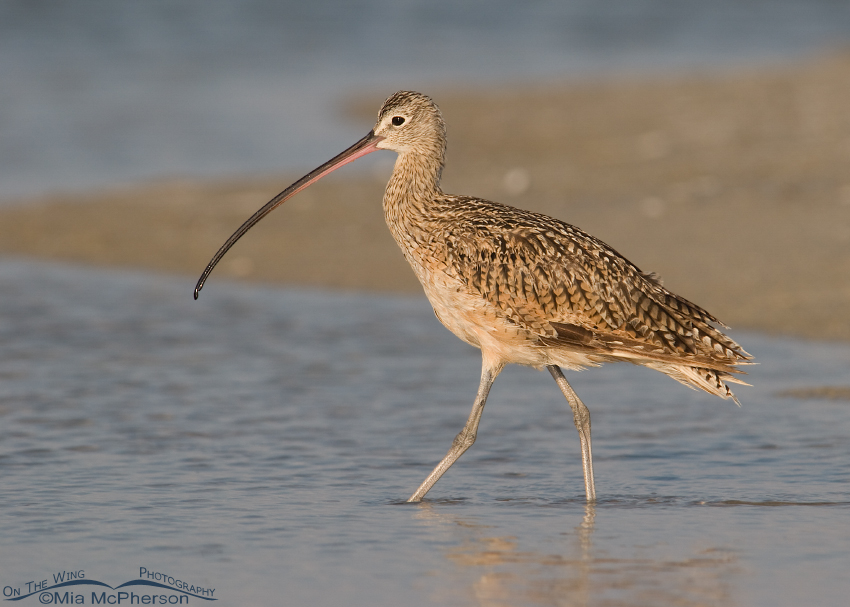 Long-billed Curlew walking the shore of the Gulf of Mexico – Nikon D200, handheld, f6.3, 1/1000, ISO 250, Nikkor 80-400mm VR at 340mm, natural light
Long-billed Curlew walking the shore of the Gulf of Mexico – Nikon D200, handheld, f6.3, 1/1000, ISO 250, Nikkor 80-400mm VR at 340mm, natural light
I saw my first of the year Long-billed Curlews two days ago on Antelope Island State Park flying overhead. They weren’t close enough to photograph but I know that soon I will have them in my viewfinder again.
The first time I recall ever seeing a Long-billed Curlew (Numenius americanus) was in Florida and I was thoroughly enchanted by its beautiful warm colors, the grace with which it moved and the elegant curves of its body and bill. It is North America’s largest sandpiper with a wingspan of between 30 to 39 inches, it towers over the smaller peeps that share its breeding and wintering grounds. Female Long-billed Curlews are generally a bit larger than the male and they also have the longest bill of the two sexes.
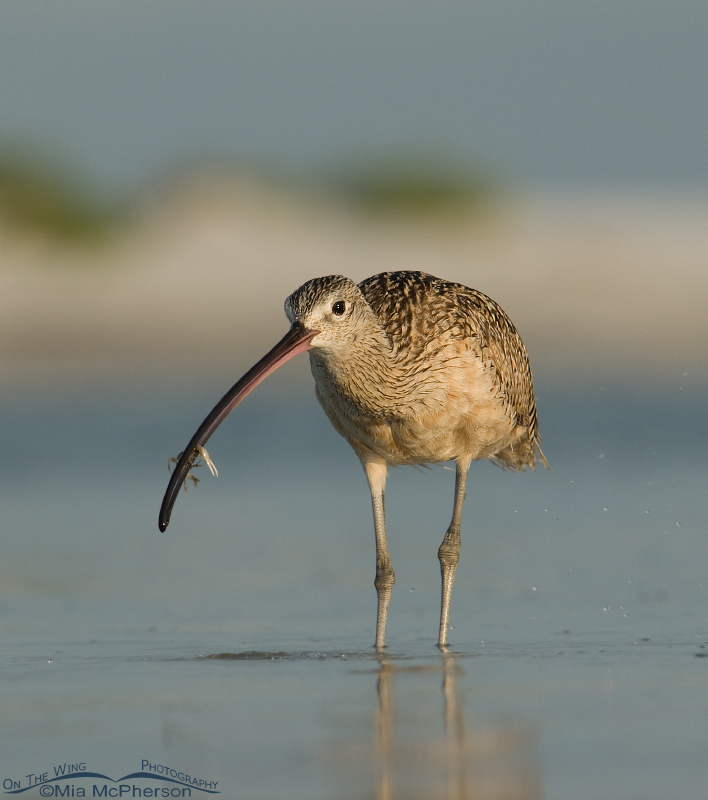 Long-billed Curlew with Fiddler Crab – Nikon D200, handheld, f6.3, 1/1000, ISO 250, Nikkor 80-400mm VR at 340mm, natural light
Long-billed Curlew with Fiddler Crab – Nikon D200, handheld, f6.3, 1/1000, ISO 250, Nikkor 80-400mm VR at 340mm, natural light
In Florida the long-billed curlews feed on small crustaceans like the fiddler crab pictured above, they also probe for insects, worms and small fish. The curvature of the bill is adapted to probing for food in wet sand, tidal mud, marshy areas of its wintering grounds and in the grasslands of the prairies of the western parts of North America.
The bird pictured above didn’t go to the breeding grounds with the other curlews, instead it spent the summer on the north beach of Fort De Soto in Florida, which gave me ample opportunities to photograph it while I was still living there in 2009.
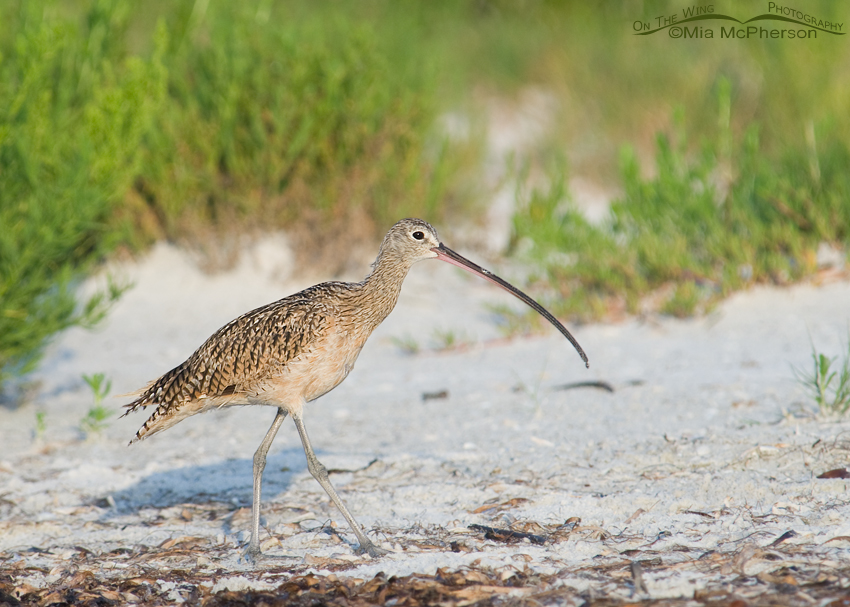 Female Long-billed Curlew strolling through the Sea Purslane and the wrack line – Nikon D200, handheld, f6.3, 1/350, ISO 250, Nikkor 80-400mm VR at 400mm, natural light
Female Long-billed Curlew strolling through the Sea Purslane and the wrack line – Nikon D200, handheld, f6.3, 1/350, ISO 250, Nikkor 80-400mm VR at 400mm, natural light
During the time I was able to observe and photograph the long-billed curlew in Florida I never once heard it call. I watched it preen, bathe, hunt, eat and rest and was surprised at how close it would come to me as I laid in the sand photographing it or when I would sit quietly in the shallow waters of the lagoons. It seemed fearless of me. But my approach to photographing shorebirds is to not cause them alarm and allowing them to come closer to me while being very still. My approach paid off many times.
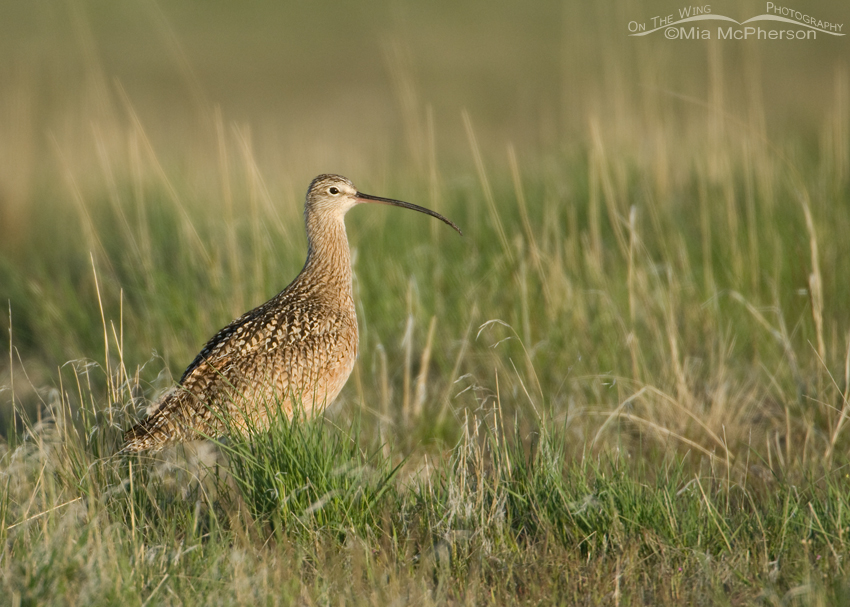 Young male Long-billed Curlew in early morning light – Nikon D200, f5.6, 1/640, ISO 400, Nikkor 200-400mm VR with 1.4x TC at 400mm
Young male Long-billed Curlew in early morning light – Nikon D200, f5.6, 1/640, ISO 400, Nikkor 200-400mm VR with 1.4x TC at 400mm
The first time I saw a Long-billed Curlew in Utah was at Bear River Migratory Bird Refuge and I was utterly surprised to see one in such different habitat than I was used to seeing them in Florida. As I grow as a bird photographer I have learned that quite often migratory birds live in very different habitats during breeding season than during winter.
Curlews seem to return to the Utah prairies around late March to early April. The young male pictured above was photographed on April 24, 2010 in the early morning.
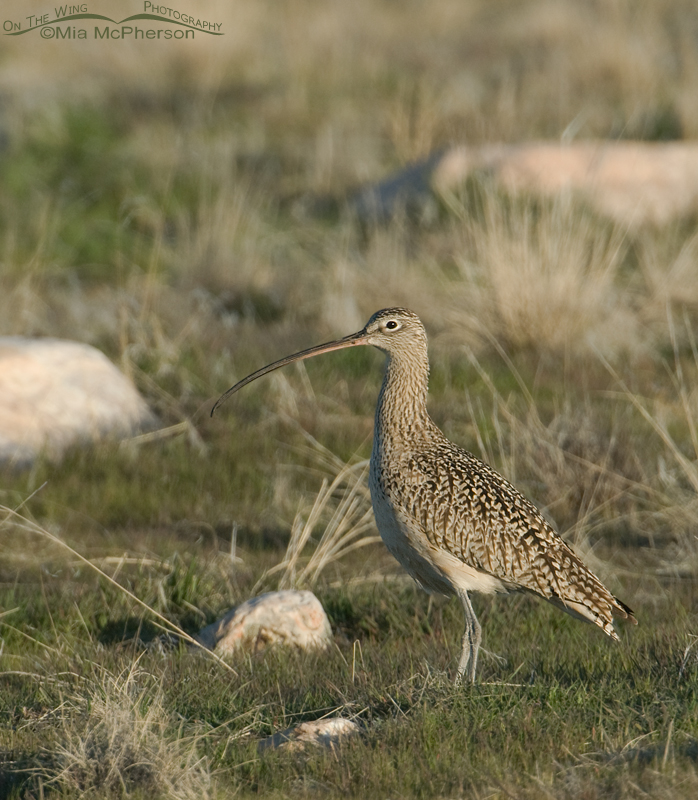 Curlew in the grasslands of Utah – Nikon D200, f7.1, 1/500, ISO 400, Nikkor 200-400mm VR with 1.4x TC at 400mm, natural light
Curlew in the grasslands of Utah – Nikon D200, f7.1, 1/500, ISO 400, Nikkor 200-400mm VR with 1.4x TC at 400mm, natural light
It was in Utah that for the first time I heard the hauntingly beautiful call of the Long-billed Curlew. It is the kind of sound that once you have heard it you won’t ever forget it. For me, now that I live in Utah, I look forward to those calls early in the spring and throughout their breeding season.
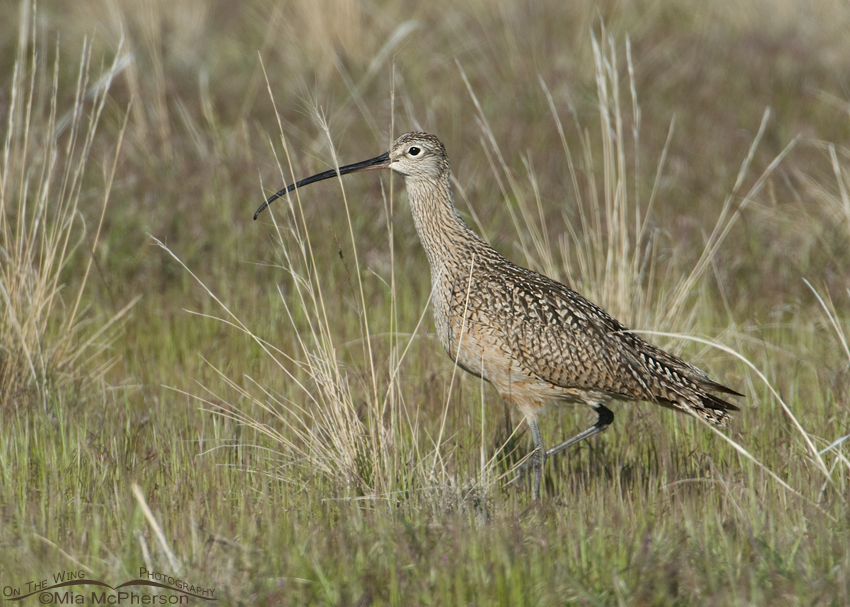 Long-billed Curlew hunting in the grasses of Utah – D200, f7.1, 1/1000, ISO 320, 200-400mm VR with 1.4x TC at 400mm, natural light
Long-billed Curlew hunting in the grasses of Utah – D200, f7.1, 1/1000, ISO 320, 200-400mm VR with 1.4x TC at 400mm, natural light
If you have never heard the call of the Long-billed Curlew I hope that at some point in your life that you do because it is as beautiful as the Long-billed Curlews are.
Mia
Click here to see more of my Long-billed Curlew photos plus facts and information about this species.
There are two shorebirds that can be mistaken for a Long-billed Curlew, they are Marbled Godwits and Whimbrels. They have similar coloring and all have long bills but the long-billed curlew has the longest bill. The Marbled Godwit’s bill is never as curved as the Long-billed Curlew and the Whimbrels bill is long but thicker. There are also differences in plumage. See below.
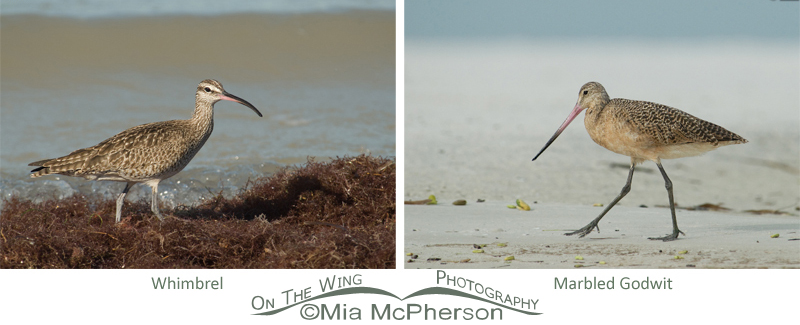


Mia, superb photographs and a really great article! We’ve had a Long-billed Curlew show up at Lake Kissimmee of all place for the past three years. It seems to like hanging out with Wilson’s Snipe which, of course, it towers over!
Thank you for this informative post and wonderful images. Contrasting Florida with Utah’s refuges is interesting, and I’m looking forward to getting out there again soon.
Love that call. Haunting and beautiful. Though, it is early here (just after 4 am) and the noise has caused one of our cats some distress. How sad, never mind.
A beautiful bird I will probably never see – thank you.
Mia, amazing photos of the Curlew! They are cool birds, great sighting.
I agree with you … such a gorgeous creature … and such beautiful images!!! Always a delight to start my day with your images .. your view of the world!!!
Incredible photos! We get the Long-billed Curlews up here in our neck of the woods too, and the Marbled Godwits. And I believe I’ve also seen a Whimbrel before.
Such gorgeous photos!
Absolutely stunning photography, I love them.